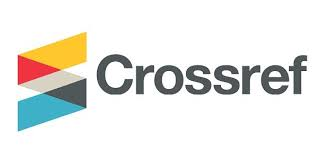ANALISIS PERSEPSI MAHASISWA PENDIDIKAN FISIKA TERHADAP E-LEARNING MENGGUNAKAN TECHNOLOGY ACCEPTANCE MODEL (TAM)
DOI:
https://doi.org/10.37478/optika.v6i2.2238Abstract
Penelitian ini bertujuan untuk mengetahui pengaruh persespsi mahasiswa program studi pendidikan fisika terhadap e-learning menggunakan Technology Acceptance Model (TAM). Data dikumpulkan melalui survey berbasis google form dengan menggunakan instrument sebanyak 15 butir. Sampel penelitian berjumlah 43 mahasiswa program studi Pendidikan Fisika yang diperoleh dengan random sampling. Data penelitian dianalisis menggunakan persamaan regresi linear dengan bantuan platform SPSS. Hasil penelitian menunjukkan bahwa: (1) ada pengaruh positif dan signifikan perceived ease of use e-learning terhadap perceived usefulness (Y = 0,858 + 0,754X; sig.= 0.000); (2) ada pengaruh positif dan signifikan perceived ease of use terhadap attitude toward to use e-learning (Y = 0,761 + 0,712X; sig.= 0.000) (3) ada pengaruh positif dan signifikan perceived usefulness terhadap attitude toward to use e-learning (Y = 0,658 + 0,730X; sig.= 0.000); (4) ada pengaruh positif dan signifikan perceived usefulness terhadap behavioural intention to use e-learning (Y = 0,0,040 + 0,950X; sig.= 0.000); dan (5) ada pengaruh positif dan signifikan attitude toward to use terhadap behavioural intention to use e-learning (Y = 0,668+ 0,817X; sig.= 0.000 pada mahasiswa program studi Pendidikan Fisika.
Downloads
Keywords:
Persepsi Mahasiswa, E-Learning, Model Penerimaan TeknologiReferences
Adwan, A. A.-, Adwan, A. A.-, & Smedley, J. (2013). Exploring students acceptance of e-learning using Technology Acceptance Model in Jordanian universities. International Journal of Education and Development Using Information and Communication Technology (IJEDICT), 9(2), 4–18.
Anggraeni, D. M., & Sole, F. B. (2018). E-Learning Moodle, Media Pembelajaran Fisika Abad 21. Jurnal Penelitian Dan Pengkajian Ilmu Pendidikan: E-Saintika, 1(2), 57. https://doi.org/10.36312/e-saintika.v1i2.101
Ayebi-Arthur, K. (2017). E-learning, resilience and change in higher education: Helping a university cope after a natural disaster. E-Learning and Digital Media, 14(5), 259–274. https://doi.org/10.1177/2042753017751712
Bangkara, R. P., Putu, N., & Harta, S. (2016). Pengaruh Perceived Usefulness Dan Perceived Ease of Use Pada Minat Penggunaan Internet Banking Dengan Attitude Toward Using Sebagai Variabel Intervening. E-Jurnal Akuntansi Universitas Udayana, 16(3), 2408–2434.
Bregasthian, & Herdinata, C. (2021). The Effect of Perceived Ease of Use, Usefulness and Risk on Intention to Use the Go-Food Application in Surabaya and Sidoarjo. KnE Social Sciences, 2021, 169–183. https://doi.org/10.18502/kss.v5i5.8807
Djazari, M., Rahmawati, D., & Nugroho, M. A. (2013). Pengaruh Sikap Menghindari Risiko Sharing dan Knowledge Self-Efficacy terhadap Informal Knowledge Sharing pada Mahasiswa FISE UNY. Jurnal Nomina, II(2), 181–209.
Hamid, A. A., Razak, F. Z. A., Bakar, A. A., & Abdullah, W. S. W. (2016). The Effects of Perceived Usefulness and Perceived Ease of Use on Continuance Intention to Use E-Government. Procedia Economics and Finance, 35(October 2015), 644–649. https://doi.org/10.1016/s2212-5671(16)00079-4
Islami, M. M., Asdar, M., & Baumassepe, A. N. (2021). Analysis of Perceived Usefulness and Perceived Ease of Use to the Actual System Usage through Attitude Using Online Guidance Application. Hasanuddin Journal of Business Strategy, 3(1), 52–64. https://doi.org/10.26487/hjbs.v3i1.410
Jan, H., Noor-ul-Amin, S., & Matto, M. I. (2018). Modular Object Oriented Dynamic Learning Environment. Journal of Applied Research in Education, 33(1), 1–11.
Kemendikbud_1. (2020). Surat Edaran Menteri Pendidikan dan Kebudayaan Nomor 4 Tahun 2020 tentang Pelaksanaan Kebijakan Pendidikan dalam Masa Darurat Penyebaran Coronavirus Disease (COVID-19). 1–3.
Kemendikbud, S. (2020). Surat Edaran Nomor 15 Tahun 202020 tentang Pedoman Penyelenggaraan Belajar Dari Rumah Dalam Masa Darurat Penyebaran Corona Virus Disease (covid-19). Kementerian Pendidikan Dan Kebudayaan, 09, 1–12.
Marini. (2012). Kajian Penggunaan Software AMOS / LISREL berdasarkan Pendekatan Technology Acceptance Model. Seminar Nasional Aplikasi Teknologi Informasi, 1(Snati), 15–16.
Masrom, M. (2007). Technology acceptance model and E-learning. 12th International Conference on Education, May, 21–24.
Mtebe, J. S., & Raisamo, R. (2014). Investigating students’ behavioural intention to adopt and use mobile learning in higher education in East Africa. 10(3), 4–20.
Nicole A. Buzzetto-More. (2008). Student Perceptions of Various E-Learning Components. Interdisciplinary Journal of E-Skills and Lifelong Learning, 4, 113–135. https://doi.org/10.28945/370
Novita, D., & Helena, F. (2021). Analisis Kepuasan Pengguna Aplikasi Traveloka Menggunakan Metode Technology Acceptance Model (TAM) Dan End-User Computing Satisfaction (EUCS) Analysis Of User Satisfaction Of The Traveloka Application Using The Technology Acceptance Model (TAM) And The En. Jtsi, 2(1), 22–37. https://doi.org/10.13140/RG.2.2.15959.80801
Oktapiani, Y., Rosario, M., & Nehemia, A. (2020). Analisis Minat Penggunaan Aplikasi Brimo Dengan Pendekatan Technology Acceptance Model ( TAM ). Jurnal Ilmiah Mahasiswa Sistem Informasi, 2(3), 249–260.
Pan, C. C., Sivo, S., Gunter, G., & Cornell, R. (2005). Students’ perceived ease of use of an eLearning management system: An exogenous or endogenous variable? Journal of Educational Computing Research, 33(3), 285–307. https://doi.org/10.2190/7M4G-R742-W9FT-JX1J
Purwanto. (2019). Analisis Korelasi dan Regresi Linier Dengan SPSS 21. In StaiaPress (Vol. 21, Issue August).
Purwanto, E. dkk. (2020). Technology Adoption A Conceptual Framework. In E. Purwanto (Ed.), Yayasan Pendidikan Philadelphia (First Edit). Yayasan Pendidikan Philadelphia,.
Rachmawati, I. K., Bukhori, M., Nuryanti, F., Marta, D., & Hidayatullah, S. (2020). The Effect Of Perceived Usefulness And Perceived Ease Of Use On Online Buying Interest Is Through The Attitude Of Using Social Media. 5th ICGSS International Conference of Graduate School on Sustainability, December, 173–182.
Tagoe, M. (2012). Students’ perceptions on incorporating e-learning into teaching and learning at the University of Ghana. International Journal of Education and Development Using Information and Communication Technology (IJEDICT), 8(3), 91–103. https://doi.org/10.1111/j.1423-0410.1993.tb05162.x
Downloads
Published
How to Cite
Issue
Section
License
Jurnal Lesensi











